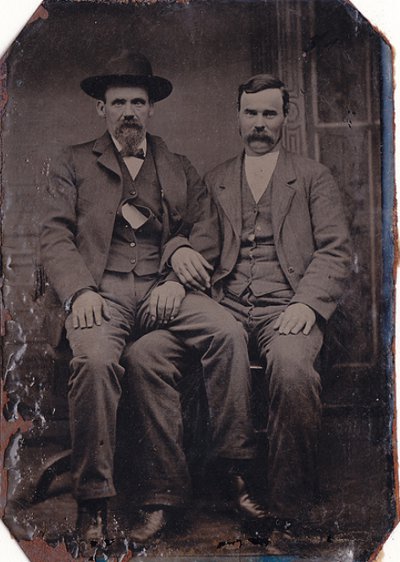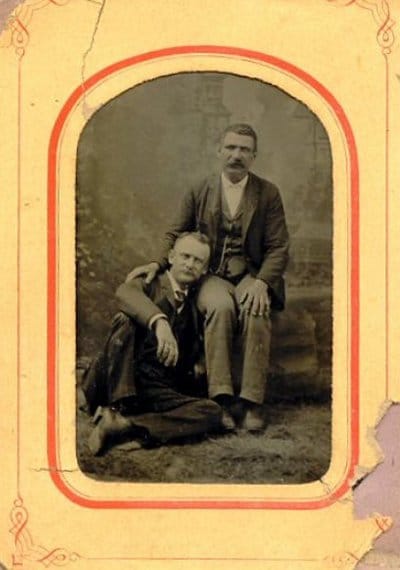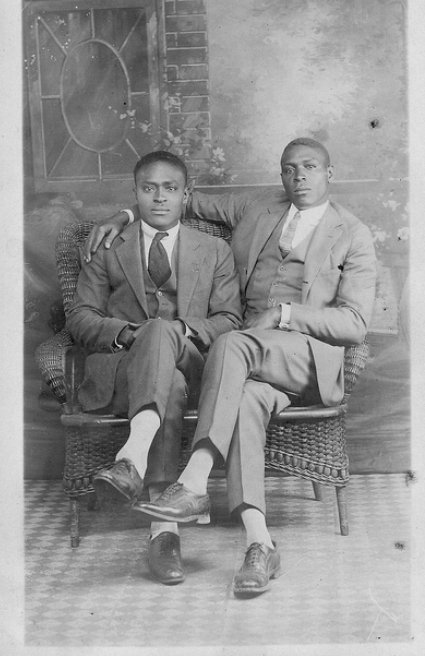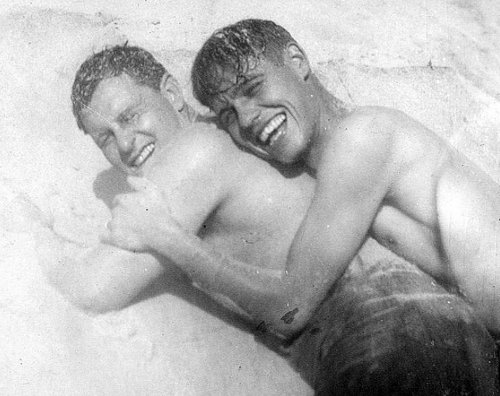THEANGEL&THEGAMBLER
Rookie
Male Affection: A Photographic History Tour | The Art of Manliness



In my unending search for just the right vintage images for our articles, I have looked through thousands of photographs of men from the last century or so. One of the things that I have found most fascinating about many of these images, is the ease, familiarity, and intimacy, which men used to exhibit in photographs with their friends and compadres.
I shared a handful of these images in our very early post on the history of male friendship, but today I wanted to share almost 100 more in order to provide a more in-depth look into an important and highly interesting aspect of masculine history: the decline of male intimacy over the last century.
As you make your way through the photos below, many of you will undoubtedly feel a keen sense of surprise some of you may even recoil a bit as you think, Holy smokes! Thats so gay!
The poses, facial expressions, and body language of the men below will strike the modern viewer as very gay indeed. But it is crucial to understand that you cannot view these photographs through the prism of our modern culture and current conception of homosexuality. The term homosexuality was in fact not coined until 1869, and before that time, the strict dichotomy between gay and straight did not yet exist. Attraction to, and sexual activity with other men was thought of as something you did, not something you were. It was a behavior accepted by some cultures and considered sinful by others.
But at the turn of the 20th century, the idea of homosexuality shifted from a practice to a lifestyle and an identity. You did not have temptations towards a certain sin, you were a homosexual person. Thinking of men as either homosexual or heterosexual became common. And this new category of identity was at the same time pathologized decried by psychiatrists as a mental illness, by ministers as a perversion, and by politicians as something to be legislated against. As this new conception of homosexuality as a stigmatized and onerous identifier took root in American culture, men began to be much more careful to not send messages to other men, and to women, that they were gay. And this is the reason why, it is theorized, men have become less comfortable with showing affection towards each other over the last century. At the same time, it also may explain why in countries with a more conservative, religious culture, such as in Africa or the Middle East, where men do engage in homosexual acts, but still consider homosexuality the crime that cannot be spoken, it remains common for men to be affectionate with one another and comfortable with things like holding hands as they walk.
Whether the men below were gay in the way our current culture understands that idea, or in the way that they themselves understood it, is unknowable. What we do know is that the men would not have thought their poses and body language had anything at all to do with that question. What you see in the photographs was common, not rare; the photos are not about sexuality, but intimacy.
These photos showcase an evolution in the way men relate to one another and the way in which certain forms and expressions of male intimacy have disappeared over the last century.
It has been said that a picture tells a thousand words, so while I have provided a little commentary below, I invite you to interpret the photos yourselves, and to ask and discuss questions such as: Who were these men? What was the nature of their relationships? Why has male intimacy decreased and what are the repercussions for the emotional lives of men today?.....






 Come on, son...
Come on, son...